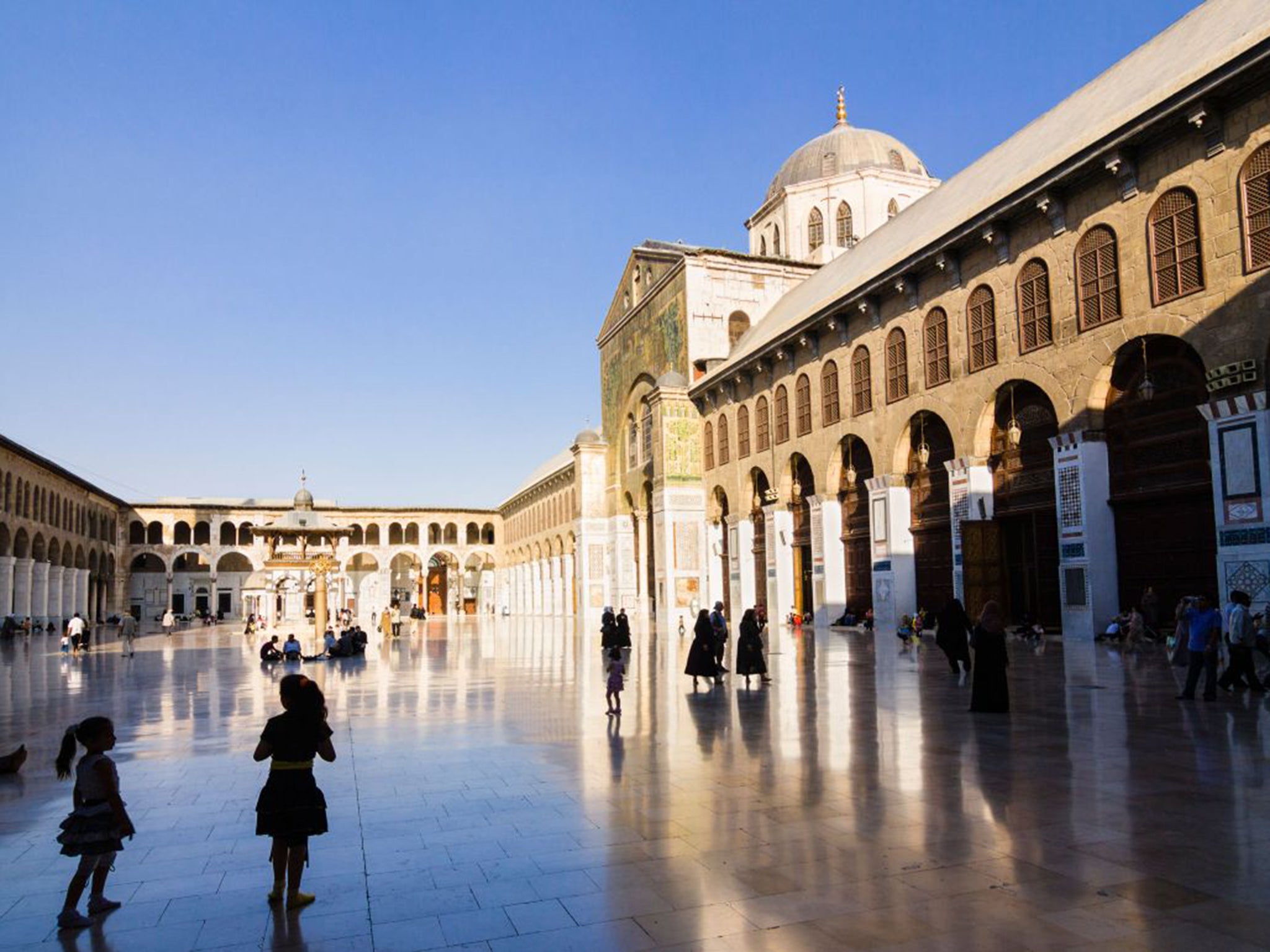Syria's six Unesco World Heritage Sites all damaged or destroyed during civil war
Aleppo's famous Umayyad Mosque complex badly hit, with 11th century minaret now ruined

Your support helps us to tell the story
From reproductive rights to climate change to Big Tech, The Independent is on the ground when the story is developing. Whether it's investigating the financials of Elon Musk's pro-Trump PAC or producing our latest documentary, 'The A Word', which shines a light on the American women fighting for reproductive rights, we know how important it is to parse out the facts from the messaging.
At such a critical moment in US history, we need reporters on the ground. Your donation allows us to keep sending journalists to speak to both sides of the story.
The Independent is trusted by Americans across the entire political spectrum. And unlike many other quality news outlets, we choose not to lock Americans out of our reporting and analysis with paywalls. We believe quality journalism should be available to everyone, paid for by those who can afford it.
Your support makes all the difference.The UN estimates a quarter of a million Syrian people have died in the five years of conflict the country has faced.
Among the human tragedies, the landscape and cultural heritage of the country have also suffered badly.
The country once had six Unesco World Heritage Sites, all of which are now either destroyed or severely damaged, according to Unesco, the United Nations body responsible for identifying significant cultural landmarks.
Some sites have been blown up and shelled during conflict, while others have been deliberately pillaged.
Palmyra’s 2,000-year-old archaeological site Arch of Triumph, once a top tourist destination, was destroyed by Isis in October after the group seized control of the area in 2015.

The group also destroyed the 2,000-year-old Temple of Bel. Other archaeological sites such as Ampamea in Hama, Tell Merdikh in Idlib and the Dura-Europos and Mari sites in Deir el-Zour have also been destroyed.

The ancient city of Bosra, once a stopping place for pilgrims on the way to Mecca, has also seen destruction after the vestiges were ruined in December. The 2nd century Roman theatre was attacked on 22 December during fighting.
“The destructions sustained by Bosra represents a further escalation in the horror of war and must be stopped at once to allow to preserve the irreplaceable heritage of Bosra,” said Irina Bokova, director general of Unesco.

Gaining Unesco recognition in 2006, Crac des Chevaliers - one of the most important and well persevered medieval castles in the world – and Qal’at Salah El-Din, both from Byzantine Crusader and Islamic periods, date back to the 11th and 13th centuries. The Syrian government is reported to be building structures to preserve the site, according to ABC News, after it was reportedly shelled.
The country’s largest city and capital of Aleppo in the north has been devastated by the war. Within the city, the famous Umayyad Mosque complex has been severely damaged and is now full of rubble, while its 11th-century minaret has been destroyed.

The Ancient City of Damascus, given Unesco status in 1979, has been reduced to a collection of ruined buildings..

Lastly, some 40 ancient villages of Northern Syria, also known as the dead cities, include archaeological sites dating from the 1st to the 7th century.
A preliminary World Bank assessment from January showed Aleppo, Darra, Hama, Homs, Idlib and Latakia to have an estimated $3.6-4.5 billion at the end of 2014.
A French team of digital surveyors from Iconem are working with archaeologists from the Syrian Directorate General of Antiquities and Museums (DGAM) to preserve the historic sites by creating detailed 3D maps of the sites.
“This solution gives our archaeological sites a real hope of renaissance and allows the memory of them to be preserved,” said Maamoun Abdulkarim, the head of DGAM.
A report compiled by the consultant group Frontier Economics and charity World Vision estimates that since 2011, the conflict has cost Syria $275 billion in loss of growth, which is 150 times more than Syria’s budget before the war began.
If the war ends by 2020, the World Bank estimates the cost of the conflict will have grown to £1.3 trillion.
More than 250,000 people are estimated to have been killed since fighting began in 2011.
Join our commenting forum
Join thought-provoking conversations, follow other Independent readers and see their replies
Comments